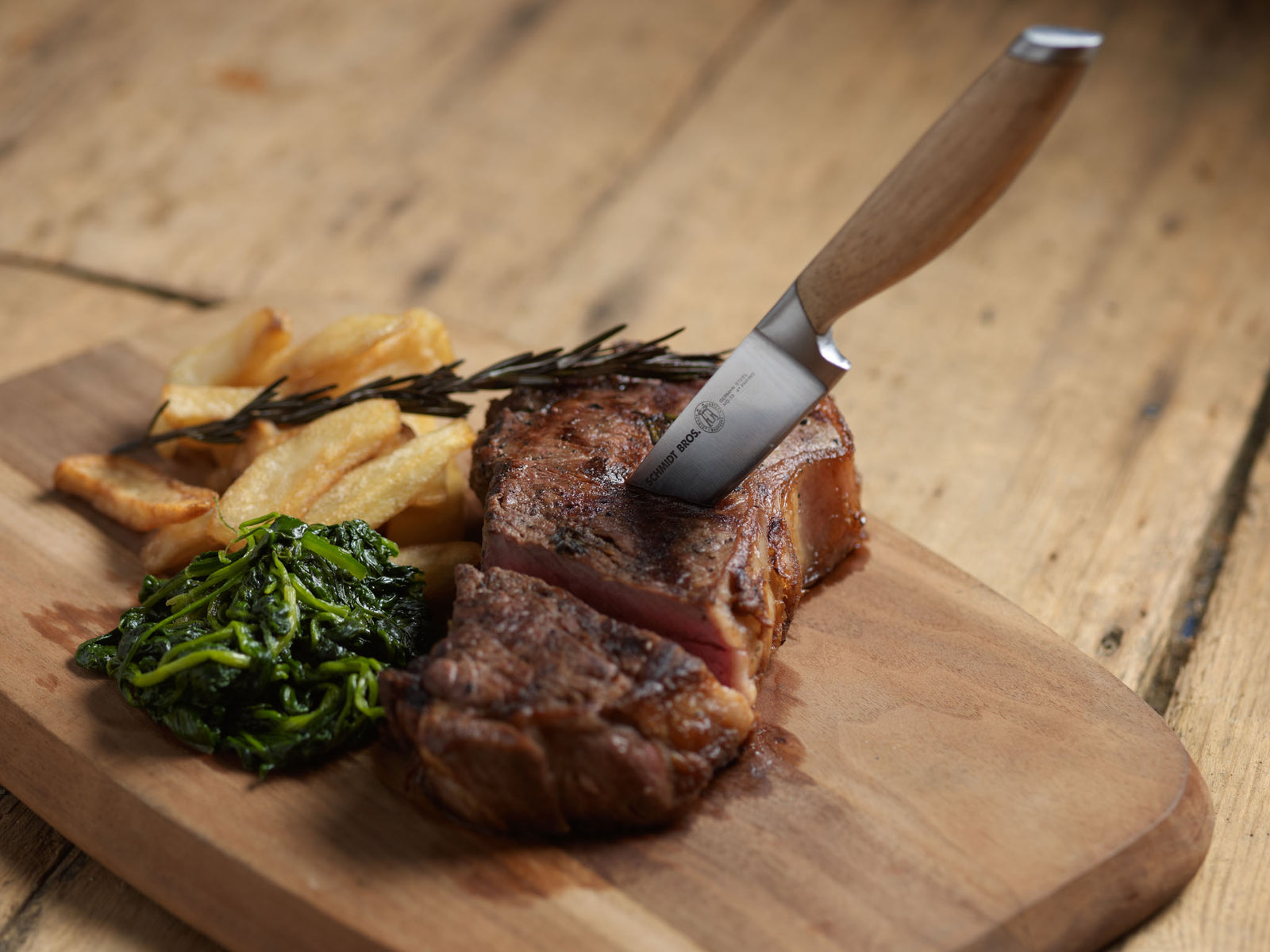For kitchen professionals, choosing between a santoku knife and a chef knife can seem overwhelming. Both blades are highly versatile, widely used, and indispensable to any serious chef's arsenal. But when it comes to the debate, 'is santoku knife better than chef knife', the answer isn't as straightforward as one might think.
As their designs, origins, and purposes differ, each knife has unique strengths. To help kitchen professionals make the right decision, well break down the attributes, performance, and best use cases for each knife. Lets settle this debate once and for all!

The Origins: Santoku Knife vs. Chef Knife
History of the Santoku Knife
The santoku knife originated in Japan and translates to 'three virtues'referring to its ability to handle slicing, dicing, and mincing with ease. It typically features a shorter, wider blade compared to the chef knife, with a straight edge and a slight curve near the tip. This makes it perfect for precision work and quick, efficient cuts.
Traditional Japanese craftsmanship emphasizes balance and lightweight designs, making the santoku knife ideal for intricate culinary tasks.
History of the Chef Knife
The classic chef knife, also known as a French knife, has European roots. With a longer blade thats curved from tip to heel, it offers versatility for a wide range of cooking techniques. Chef knives are excellent for heavy-duty tasks like chopping dense vegetables and slicing through meat effortlessly.
The chef knife is a staple in professional kitchens worldwide, boasting durability and adaptability for various cuisines.
Blade Design: How Do These Knives Compare?
Santoku Knife Design
A defining feature of the santoku knife is its flat, straight-edged blade with a rounded tip. Its short blade length, typically around 5 to 7 inches, ensures control and accuracy. Many modern santoku knives incorporate hollow grounds along the blades edge to minimize food sticking while slicing.
This design makes the santoku knife a go-to for precise cuts like thinly slicing vegetables, fish, or even herbs. Learn more about mastering knife skills here!
Chef Knife Design
The chef knife has a longer blade, typically ranging from 6 to 12 inches. Its curved edge promotes a rocking motion thats perfect for chopping, mincing, or slicing with speed. The chef knife is heavier than the santoku knife, which provides better momentum for tougher cuts.
With its sharp tip and thick spine, this knife is versatile for various prep tasksfrom cutting through bones to carving large meats. Curious about chef knives? Check out what knife Chef Ramsay uses.
Performance in the Kitchen: Which Knife Takes the Lead?
Precision and Balance: The Santoku Knife Advantage
The santoku knife excels with precision tasks. Its lighter weight and compact design allow for greater control, making it unmatched for intricate cuts and food finesse. Chefs who often prepare sushi, cut delicate vegetables, or craft highly detailed dishes may find the santoku knife a clear winner in their kitchen.
Power and Versatility: The Chef Knife Advantage
What the chef knife lacks in finesse, it compensates for with raw power and flexibility. Its curved edge makes it perfect for bulk chopping, slicing, and heavy-duty prep work. Need to break down a chicken or chop sturdy vegetables like pumpkins? The chef knife is your go-to tool.
If you're ready to invest in ergonomic tools, explore chef knife accessories for secure storage and easy transport.
Maintaining Your Knives for Longevity
Regardless of which knife you choose, proper maintenance is essential for longevity. Regular sharpening is a must. Looking for tips? Learn how to sharpen a knife effectively to keep your blades razor-sharp.
Cleaning your santoku and chef knives also demands care. Manual washing is recommendedsoap, warm water, and a soft sponge are all you need. Avoid the dishwasher, as it can dull the blades over time. For a detailed cleaning guide, visit this resource.
FAQs
1. Can a santoku knife replace a chef knife?
While the santoku knife can handle many of the same tasks, it is not a full replacement. Santoku knives excel at precision, while chef knives are better suited for heavy-duty tasks.
2. Which knife is better for chopping vegetables?
The santoku knife is generally better for precise vegetable cuts, but the chef knife dominates when speed and power are needed for larger quantities.
3. How do I choose between a santoku knife and a chef knife?
Consider your cooking style. If you value precision and lightness, go for a santoku knife. For versatility and durability, a chef knife is ideal.

Final Thoughts
So, is santoku knife better than chef knife? The choice ultimately depends on your culinary needs. For precision tasks and lightweight handling, the santoku knife shines. But for all-around versatility and power, the chef knife remains irreplaceable.
No matter your decision, investing in a high-quality knife that feels comfortable in your hand will elevate your cooking experience. Happy slicing!
This article contains affiliate links. We may earn a commission at no extra cost to you.


























